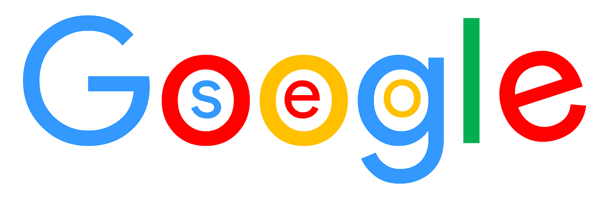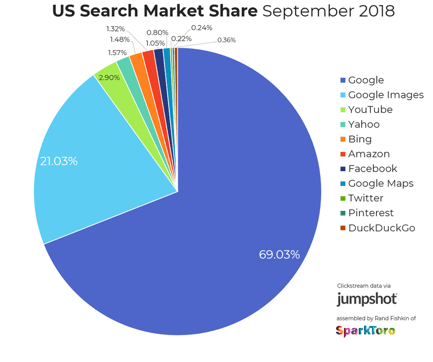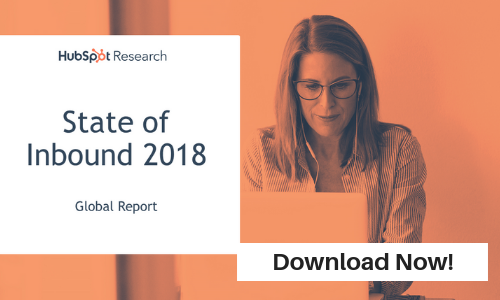 Images and video are now staples in every marketer’s toolbox. Both Google and Bing have introduced AI-powered visual search. The latest market share information published by SEO expert Rand Fishkin at SparkToro shows that Google owns 90% of the search market and Image Search now accounts for more than 21% of all search traffic.
Images and video are now staples in every marketer’s toolbox. Both Google and Bing have introduced AI-powered visual search. The latest market share information published by SEO expert Rand Fishkin at SparkToro shows that Google owns 90% of the search market and Image Search now accounts for more than 21% of all search traffic.

Image and video optimization are often overlooked in SEO plans. The data shows if you aren’t making image SEO a key part of your marketing strategy, you are missing opportunities to increase engagement, to boost search engine rankings and build brand awareness.
Visual Content is a Powerful Marketing Tool
Text will always play an important role in most websites, and text-based pages, posts, and documents are key in building a site’s search rankings. However, visual content of all kinds – images, slideshows, infographics, and video – draw viewer interest in different ways, working with text to create a synergy that generates more engagement and SEO value than text alone. Consider these recent stats.
- Cisco projects that global internet traffic from videos will make up 82% of all consumer internet traffic by 2021. (Source)
- 80% of marketers use visual assets in their social media marketing. Video (63%), alone, has also surpassed blogging (60%) in usage as a social media marketing asset. (Source)
- When people hear information, they're likely to remember only 10% of that information three days later. However, if a relevant image is paired with that same information, people retained 65% of the information three days later. (Source)
- 51% of B2B marketers prioritize creating visual assets as part of their content marketing strategy. (Source)
You need to provide a sales-ready web site that provides visitors a top-notch online experience – one that offers them the most relevant information in the most accessible format, delivered in the shortest amount of time. While Google’s much-amended algorithms lean heavily toward rewarding meaty, long-form articles that include long tail keywords and natural language, the world’s largest search engine loves images – and rewards sites with the right kind of images, properly optimized, in the same way.
Image SEO Improves Search Rankings
When Google crawls webpages for indexing, it looks for keywords, how and where those keywords are used, in text and in visual content. And just as it does with text, it considers the value that content adds to the site and to the experience of users who visit.
The same criteria apply: images need to be high quality, optimized for SEO in multiple ways, mobile responsive, and relevant to a user’s search query. Visual content that meets those standards enhance the ranking potential of the page or post to which it’s attached, and the content itself can generate quality backlinks when shared and searched with tools like Google Image Search.
5 Tips on How to Improve Image SEO
Google’s crawlers index images in ways similar to documents and webpage text –by keyword, search relevance, and quality. With Google visual search, it has begun to index text that appears directly on an image as well as crawl an image’s HTML tags and metadata, and evaluate whether it actually enhances the overall relevance and quality of the webpage where it appears. That means that there are many ways to optimize visual content for search relevance.
- Plan Image Placement - Just about every website has multiple destinations for visual content, and they can all be optimized for search. But Google prefers that images and video appear close to the content they refer to and that the content references the visuals in some way. If you’re building your site place images in headers and backgrounds, on landing pages or as the featured image in a blog post. All of them offer opportunities for SEO if they add value and additional information to the text.
- Optimize for All Devices - Google rewards sites that are mobile responsive, and the same is true for images. Before posting, images such as photographs and illustrations need to be optimized for the highest image quality to display on all kinds of devices. That means selecting the right dimensions (usually square or rectangular), at the highest possible resolution while keeping file sizes small for fast loading.
- Optimize for Safe Search - To make your content available to the right audience, optimize with Google Safe Search in mind. Safe Search is a family friendly filter option for Google Search that screens out explicit adult content. If you have adult content on your site, add “adult” to the relevant image tags so that it can reach its intended audience.
- Add Alt and Title Tags - Both “alt” and “title” are HTML attributes for images, and if you don’t add information about the content of an image and its title, those fields are left blank. That means that they can’t be read by screen readers that make web content available to the visually impaired. Filling an image’s alt, title and caption fields with relevant keywords makes the image searchable and relevant to Google’s crawlers.
- Make Video Content Searchable - Video is arguably the most popular visual content on the web, and most videos can’t be directly optimized using a website’s own tools because they’re generally embedded from another site. To make video content more searchable, optimize it on the site where it appears, such as YouTube or Vimeo. Consider creating and posting a transcript and video sitemap to aid Google’s indexing.
- Image and video content consistently outperforms text-based pages and posts in searches and engagement. In today’s content marketing world, images reign supreme. Image SEO works best when integrated with text-based content strategies to increase engagement and boost search rankings.
This post was co-authored by our web partner - 3 Media Web, an award-winning website design and digital marketing agency.
61% of all marketers cited that growing organic traffic to their website is a top priority. Learn more by downloading the State of Inbound 2018 report below.




